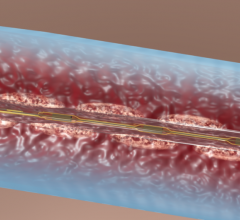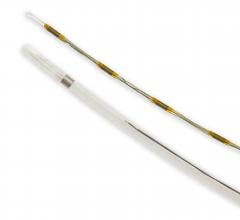February 7, 2011 – There is a tremendous unmet need for new medical technologies to treat potentially dangerous chronic venous insufficiency (CVI) and blood clots, according to a Scientia Advisors review of the vascular device market.
The review comes in light of an aging population and increasing chronic vascular disease. Both the CVI and the thrombosis segments present significant opportunities for medical device innovators.
“Most vascular devices currently on the market treat only symptoms, have low patient compliance or are highly invasive, with significant side effects or risks,” said Arshad Ahmed, a partner at Scientia Advisors. “There are great needs for novel methods of compression and ablation to treat varicose veins and for minimally invasive catheter technologies that can safely and easily do away with potentially deadly blood clots.”
With most major cardiovascular players focused elsewhere, smaller companies have an important presence in the venous sub-markets. Hence, emerging companies can impact what is currently a fragmented marketplace and there is opportunity for larger, anchor companies to acquire or license.
“However, companies seeking to enter these venous fields should recognize that innovative, effective technologies are not enough to ensure success,” Ahmed said. “Sophisticated sales and marketing, physician education, understanding of reimbursement and attention to health economics and outcomes are crucial to product viability.”
Key findings:
Overall Vascular Device Market
• The $5 billion vascular device market, a relatively small piece of the $300 billion medical device market, has shown a sustained compound annual growth rate of 10 percent since 2007. This has been driven largely by increasing aging, obese and diabetic populations.
• As a result of recent acquisitions, medical device company Covidien’s $1 billion vascular group accounts for 22 percent of the market, making it the leader in highly innovative vascular solutions.
• With smaller companies engaging in acquisitions and large firms limiting their activity to licensing agreements, the market is on the verge of consolidating.
Chronic Venous Insufficiency (CVI) Segment
CVI, which ranges in severity from aesthetically displeasing spider veins to large, open-wound venous ulcers, affects 2 to 7 percent of the U.S. population—including approximately half of women over age 50.
• CVI is most commonly treated with compression therapy (bandages or hosiery applying continuous pressure to the patient’s lower leg). However, compression does not treat underlying causes of CVI.
• Promising new therapies include dynamic compression, in which a pumping device applies intermittent pressure, and endovenous ablation, in which faulty superficial veins are collapsed using heat from a laser or radiofrequency energy, delivered via catheter.
• Dynamic compression could see considerable growth if clinical trials show it works better than “static” methods.
• The endovenous ablation market is growing rapidly and may displace invasive surgical methods, such as vein stripping and phlebectomy (a procedure in which small incisions are used to remove problematic veins).
Thrombosis Segment
Thrombosis, or blood clot formation, can lead to embolism, a condition in which a clot moving through the vascular system gets lodged in a vessel. Every year, 2 million Americans are affected by deep vein thrombosis (DVT). Some 6 percent of those with DVT die within one month of diagnosis, primarily due to pulmonary (lung) embolism.
• Oral anti-thrombotics, which cost $2,000 to $3,000 per patient per year, do not prevent thrombosis recurrence and can cause increased bleeding. Intravenous injection of anti-thrombotics substantially increases the risk of major hemorrhage and does not fully recanalize the vein in 66 percent of patients.
• Promising new therapies include novel catheter technologies for localized removal of thrombi, for which FDA approval was first granted in 2006.
The review, “Opportunities in Vascular Devices: New Developments to Change the Treatment Paradigm and Drive Growth,” is available for free at: http://www.scientiaadv.com/vascular-device-market-opportunities-review.php
For more information: www.scientiaadv.com


 November 21, 2022
November 21, 2022 




